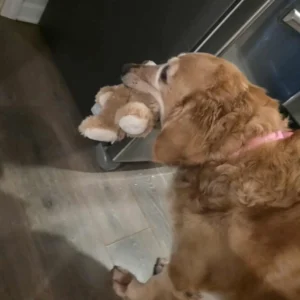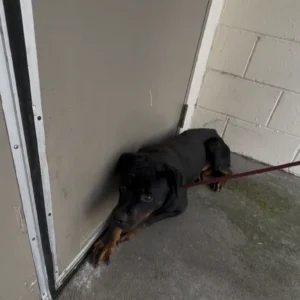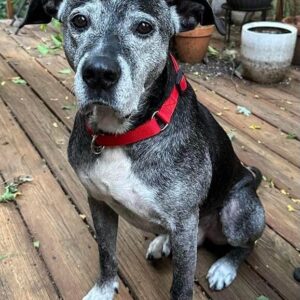When Melissa adopted a senior tabby named Oliver from a Maryland shelter, she imagined cheerful mornings, playful afternoons, and warm cuddles at night. But what awaited her was not the purring gratitude she had expected. Instead, Oliver’s reaction was… silence.
The shelter had warned her: Oliver was a “quiet case.” He didn’t interact much, rarely ate, and had been returned twice before. Melissa, an animal behaviorist, thought love and patience could fix anything. But on the first night, as she opened the carrier, Oliver didn’t move. He sat motionless in the corner of the room, eyes wide but empty.
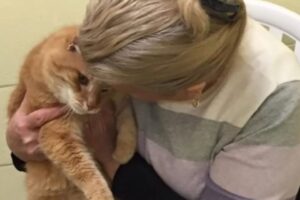
Over the next few days, Oliver didn’t eat. He didn’t explore. He didn’t even hide. He simply existed—still and detached. Melissa began to wonder: What had this cat been through?
On day five, something changed.
Melissa placed a soft toy near him, not expecting much. But a few hours later, she found Oliver curled around it, gently pawing it like a long-lost sibling. Her heart cracked open. It wasn’t just about being “shy” or “slow to adjust”—this cat was grieving. Deeply.

Melissa dove into research about shelter trauma. Turns out, cats like Oliver aren’t rare. They’re often labeled unadoptable. Not aggressive—just… too quiet. Too sad. Too broken. But broken doesn’t mean hopeless.
So Melissa changed her strategy. She didn’t call his name. She didn’t reach out. She just… existed with him. Sat on the floor, read books aloud, and whispered stories about what life could be like, if he wanted it.
And then it happened.
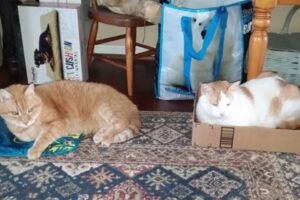
On a rainy Thursday, Melissa woke up to a strange feeling: weight. A gentle, warm weight at her feet. Oliver had climbed onto the bed for the first time. He didn’t purr. He didn’t nuzzle. But he stayed.
From that day, small miracles unfolded—tiny steps toward trust. A paw on her lap. A soft meow. One day, he even followed her to the kitchen.
Melissa documented the journey online, and the internet responded. Thousands shared stories of their “quiet pets,” animals who took longer—but gave deeper love.
Oliver didn’t become a lap cat. He didn’t chase lasers or pose for photos. But what he did become was remarkable: a reminder that healing has no timeline, and that some souls just need stillness to bloom.




